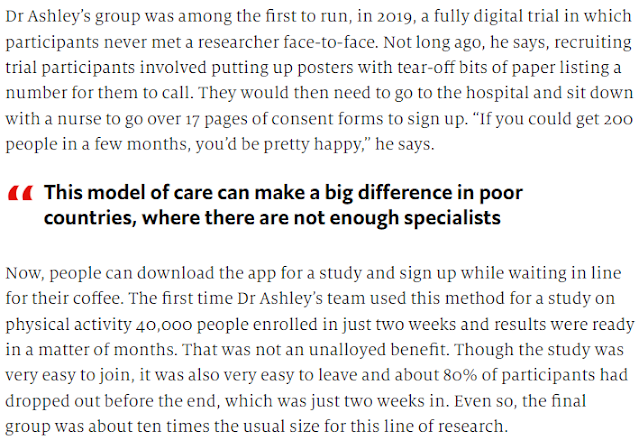This article from The Economist, "Data from wearable devices are changing disease surveillance and medical research," has a home in your stats or RM class. It describes how FitBits and Apple Watches can be used to collect baseline medical data for health research. I like it because it is very accessible but still goes into detail about specific research issues related to this kind of data:
-How does one operationalize their outcome variable? Pulse, temperature, etc., as proxies for underlying problems. Changes in heart rates have predicted the onset of COVID and the flu.
-Big samples be good! One of the reasons this data works like it does is because it is harvested from a massive number of people using these devices.
-The article gives examples of well-designed experiments that use wearable technology. However, often with massive data collection via tech, the data drives the hypothesis, not the other way around. In our psychology classes, we discuss NHST and the proper way to create and test a hypothesis. As we should. But sometimes, the data establish the hypothesis. It is essential to discuss this because it happens a lot in non-social science research. For instance:
-Teach your students the pain of recruiting participants and how this method helps.
-Bias in data collection: Who can afford wearable technology? Perhaps some of the patterns detected by wearable tech are only applicable to the privileged people who use them:
If you've already worked your way through your three free articles per month, here is a PDF.






Comments
Post a Comment